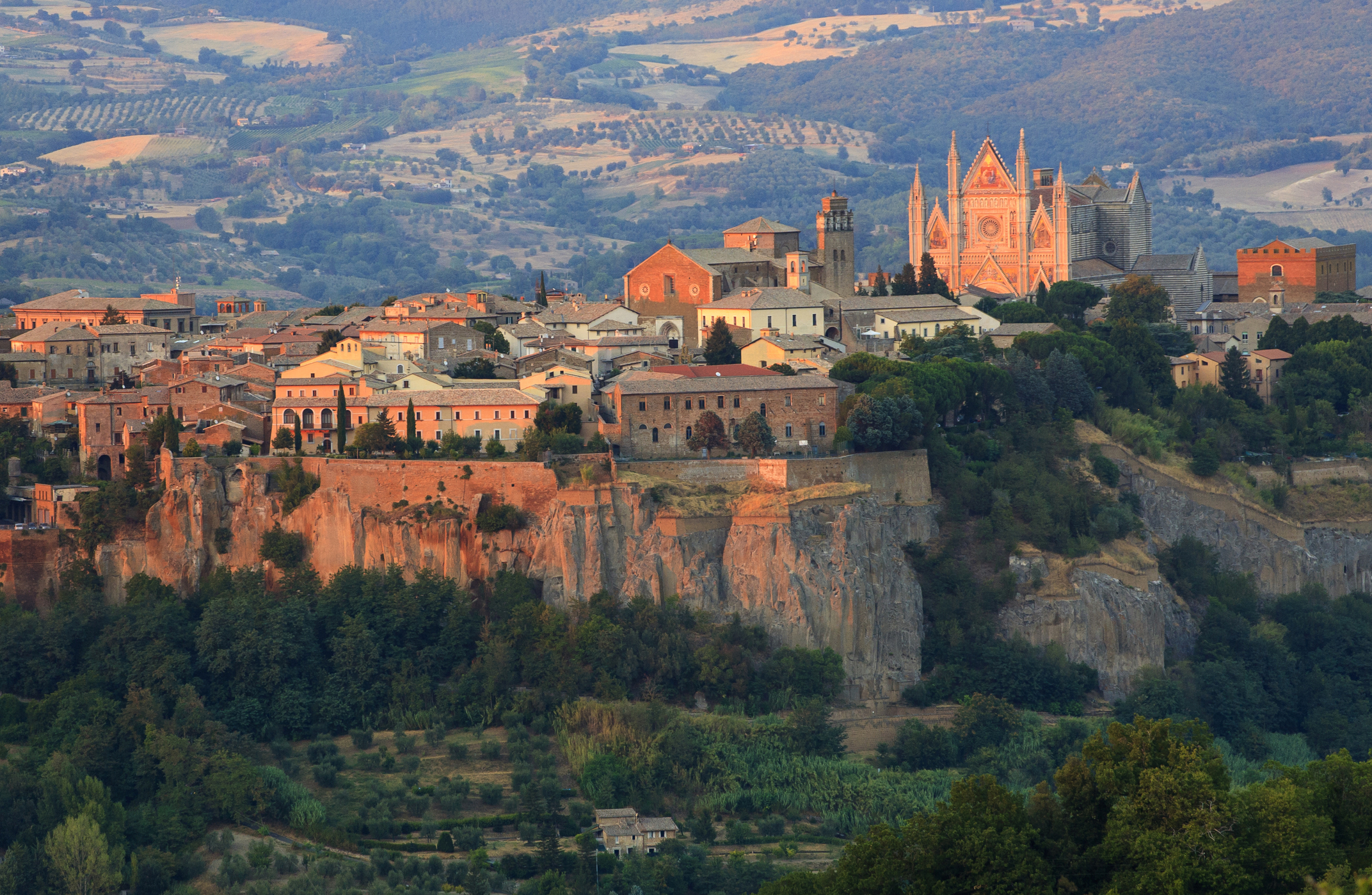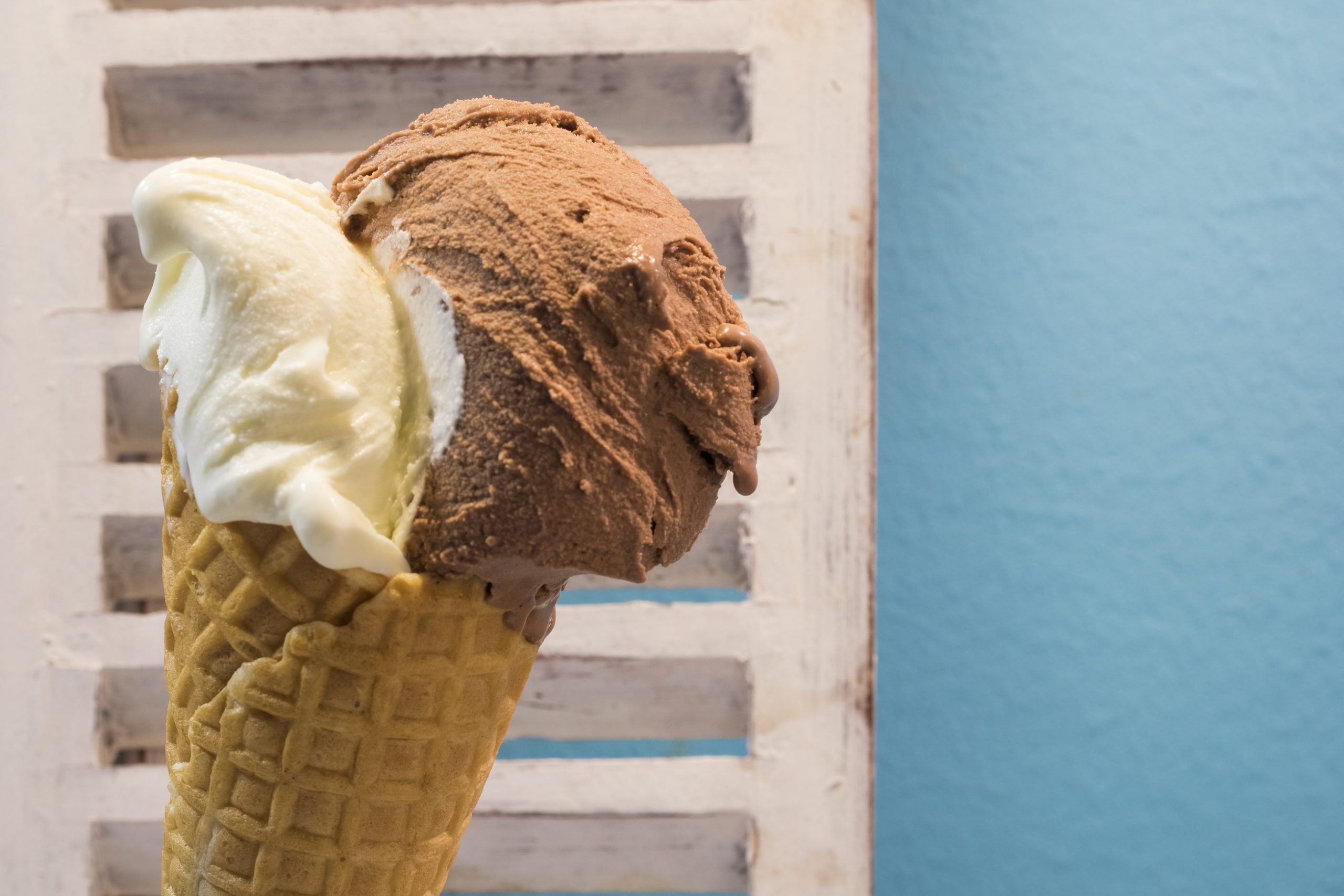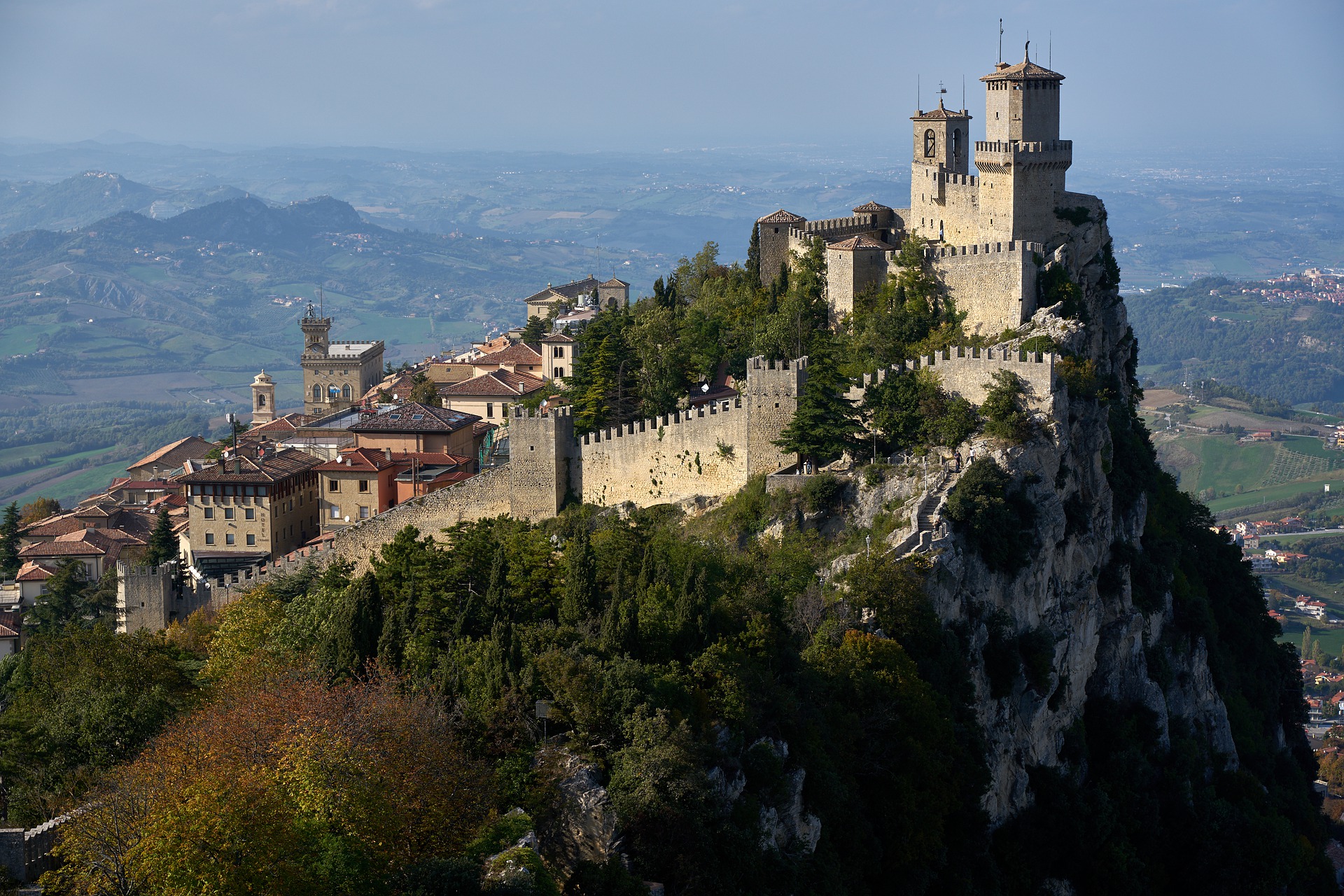What are you going to do today?” asked Sabrina, the owner of Ripa Medici, the adorable two-room B&B I was staying at for a week in Orvieto.
Technically in Umbria but off to the side a bit, wedged in between Tuscany and Lazio, Orvieto sits on the top of a plateau made of “tufa” rock (“tuff”, in English). “Tufa” is consolidated volcanic ash. In the case of Orvieto’s high seat above the valleys surrounding it, this volcanic ash was deposited here almost 100,000 years ago. Locally it’s known as simply “La Rupe” – “The Rock”.
“Well,” I say, “I think I’m going to hike l’Anello della Rupe” (“The Ring of the Rock”).
“Oh!” Sabrina exclaims, setting down a Nutella crepe in front of me. “Che faticoso!”
Despite Sabrina’s warning that it’s a strenuous hike, I set out after breakfast through Porta Maggiore and walk down through one of the parking lots outside the town walls to one of five entrances to the trail. The “ring” around the “rock” is a trail about halfway down the plateau that completely circles it, looking down at the valley below while the edges of the city loom high overhead. Its relatively flat (until you have to climb back up to Orvieto) and, in this part of the trail, well-marked and even paved! Joggers, wrapped up against the winter chill, lope by and mothers pushing strollers chat as they pass in the other direction.
At various points there are large signs pointing out various things to look at along the way. The first one I come to is in a small clearing, the tall trees giving way to expose an incredible view of the Rock. It towers above the trail, its sheer immensity overwhelming. The sign points out small holes in the side of the rock face, like little windows of underground houses. In fact, these are windows to pigeon caves.
In medieval times people in Orvieto would “farm” pigeons. They dug caves under the city and equipped them with water for drinking and bird-baths, small holes for nesting and a window to the outside so they could leave to hunt and return to eat and, well, be eaten. You can walk through the caves as part of the “Underground Orvieto” Tour that leaves from Piazza Duomo.
I pass over the funicular track that is constantly bringing tourists and locals alike up from the lower Orvieto train station to the upper, medieval town. Soon the paved trail disappears – and so do the people. I walk alone on an overgrown path, the vegetation much more wet and wild. It doesn’t seem like the sun hits this part of the trail for very long or very often. It makes me feel like I’m traipsing through a forgotten wood, a fairy getting ready to drop out of a yellow maple or a gnome to pop out of a hollowed-out tree stump. This is definitely my favorite part of l’Anello della Rupe, no question.
And what are these conditions perfect for? Growing mushrooms, of course! Two large caves that were originally created when the stone was quarried for building were later used to grow mushrooms. I’ve never thought of anyone having to actively grow mushrooms, but of course they do! The caves have gone out of use, now, though.
The trail becomes a bit more defined right before I arrive at Necropoli estrusca del Crocefisso del tufo, the Etruscan burial site designed around 600BC as a small city. Covered in grass and algae and almost level with the ground around them, the tops of the tombs blend into their environment. You can enter the necropolis – and even some of the tombs! – and walk down the small streets laid out like a grid in the shadow of the Rock. If you can read Etruscan (anyone?), you can identify the deceased assigned to each tomb; their names are still etched above the entrances.
A little farther on I come across the church that houses the cross that gave the necropolis its name, Chiesa del Crocefisso del Tufo. You’d never know it was a church; it just looks like a small door in the side of the cliff. The church – and the crucifix, actually – are carved into and out of the tufa of the Rock. Legend has it (though scholars scoff) that a soldier named Floriano in the 6th century was falsely accused by his comrades-in-arms of theft and murder. Distraught, Floriano threw himself from the top of the cliff clutching tightly to the crucifix he always wore around his neck. Miraculously, he landed completely unharmed and, as a sign of gratitude, began to carve a new crucifix out of tufa rock… with his hands.
After about three hours – and about three hundred pictures of trees – I turn a corner around the cliff wall and see Porta Maggiore ahead of me. It hadn’t been as “faticoso” as I had been warned. In fact, it had been a beautiful, relaxing morning, a stroll through a bit of history, a varied and delightful walk through nature. If you have a few hours to spare when you’re in Orvieto and want to get away from the typical tourist sites, give l’Anello della Rupe a try; you’ll discover more than you expect along the Ring of the Rock.
Jessica is a travel enthusiast and entertainment executive living in Los Angeles. Her independent travels through Italy have inspired her travel blog, OneDayInItaly.com
































